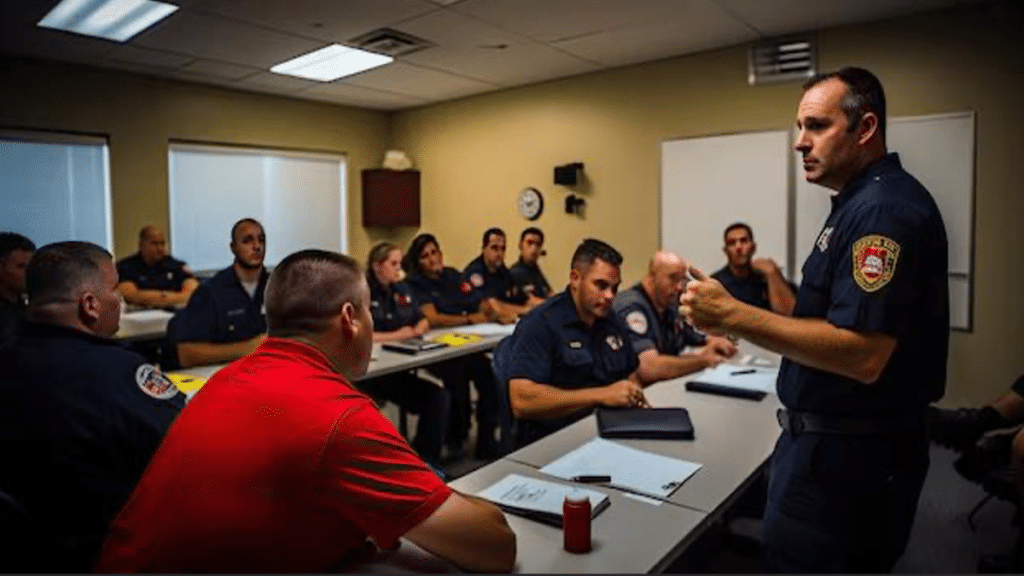In today’s law enforcement environment, community engagement has emerged as a cornerstone of effective policing. Integrating community-focused strategies into police training programs has shown great promise in building trust, enhancing public safety, and improving overall police performance. This article delves into the multifaceted role of community engagement in police training, presenting a comprehensive analysis supported by comprehensive research, a unique perspective, and a holistic approach.
Introduction
Community involvement in law enforcement refers to the joint efforts of police departments and communities to address public safety issues, build mutual trust, and foster professional relationships. Traditionally, police training programs are focused on technical skills, legal skills, and physical fitness. However, the evolving requirements of today’s policing require a comprehensive approach that includes community-based approaches.
Developing Police Training Programs
Traditional Police Training
Historically, police training programs have focused on rigorous physical education, legal education, and tactical skills. While important, these programs rarely placed much emphasis on interpersonal communication, cultural competence, and community relationships.
A Shift Toward Community Engagement
Over the past few decades, there has been a paradigm shift in police training methods. Growing research on the importance of community engagement has led to the inclusion of various community-based elements in police training courses. Several factors are contributing to this change, including growing public demands for police accountability, the growing profile of police misconduct, and increasing research focusing on the value of community policing on the other
The Benefits of Community Participation in Police Training.
Building Trust and Legitimacy
One of the main benefits of community involvement in police training is the establishment of trust and legitimacy. Training officers to interact with communities in meaningful ways helps build a foundation of trust. Community members are more likely to cooperate with law enforcement when they feel respected and understood, increasing appropriate police action.
Enhanced Public Safety
Community engagement has a direct impact on public safety. Police officers who understand and cooperate with their communities can better address the underlying issues. For example, community-oriented policing strategies can effectively prevent crime, as police are more dependent on the specific needs and concerns of the communities they serve.
Improving Police Safety and Welfare
Connecting with the community can improve police safety and well-being. When police have good relationships with the community, they’re more likely to have access to information and support that can help them do their jobs safely. Additionally, positive community interactions can reduce stress and improve job satisfaction among police officers.
Key Drivers of Community Participation in Police Training
Cultural Competence Training
Cultural competence is an important component of community engagement in police training. They need to be equipped with skills and knowledge that will enable officers to communicate effectively with people from different backgrounds. This includes understanding cultural values, addressing biases, and using respectful and inclusive communication strategies.
Communication Skills
Effective communication is essential to building trust and resolving conflict. Current police training programs emphasize the development of communication skills, including active listening, empathy, and nonverbal communication. These skills help officers de-escalate potentially tense situations and foster positive interactions with the community. Solving problems together
Collaborative Problem Solving
Involves working with communities to identify and solve local problems. Training programs that incorporate this approach teach adults to engage with community stakeholders, understand their problems, and develop collaborative solutions. This collaborative approach not only solves immediate problems but strengthens long-term relationships between police and the public.
Getting Young People Involved
Engaging with youth is central to community-focused policing. Training programs that focus on youth engagement teach police officers how to communicate with youth, understand their perspectives, and participate in community safety programs. Manage your law enforcement training program in one workspace, thanks to Tracwire.
Case Studies and Examples
Boston Police Department Community Engagement Program
The Boston Police Department (BPD) is a leader in integrating community engagement into its training programs. BPD’s community policing programs include regular community engagement, collaborative problem-solving, and cultural skills training. T
Camden County Sheriff’s Office Opinion
In Camden, New Jersey, the Camden County Police Department (CCPD) has implemented a comprehensive community engagement program. This includes community outreach, community events, and youth engagement programs.
Challenges and Solutions
Resistance to Change
One of the main challenges to community involvement in police training is resistance to change. Some police officers and departments are reluctant to use alternative methods and approaches.
Resource Limitation
The implementation of community engagement strategies can be very resource-intensive. Adequate time and funding should be allocated to training programs to ensure that police receive comprehensive training.
Consideration of Success
Measuring the success of community engagement programs can be challenging. Traditional measures, such as crime rates, do not adequately capture the impact of these policies. Developing additional measures that look at trust, community satisfaction, and officer-community interactions is needed to assess the effectiveness of community-focused training.
Future Directions
Integration of Technology
The future of community involvement in police training lies in the integration of technology. Virtual reality (VR) and augmented reality (AR) provide immersive training experiences that mimic real-world interaction. This technology can enhance cultural competence training, improve communication skills, and provide valuable insights into community development.
Expanding Community Partnerships
Expanding partnerships with community organizations, schools, and businesses can increase the effectiveness of community engagement programs. This networking will provide additional resources, support, and ideas that can enhance police training programs and strengthen community-police relationships.
Continued Professional Development
Police training programs must include regular refresher courses, workshops, and seminars to keep officers updated on best practices and emerging trends in community-oriented policing.
Wrapping It Up
Community involvement in police training programs represents a transformative change in law enforcement. By building trust, enhancing public safety, and improving police welfare, community-centered training strategies address today’s complex policing challenges. While there are challenges to these strategies in practice, the benefits far outweigh the obstacles.
